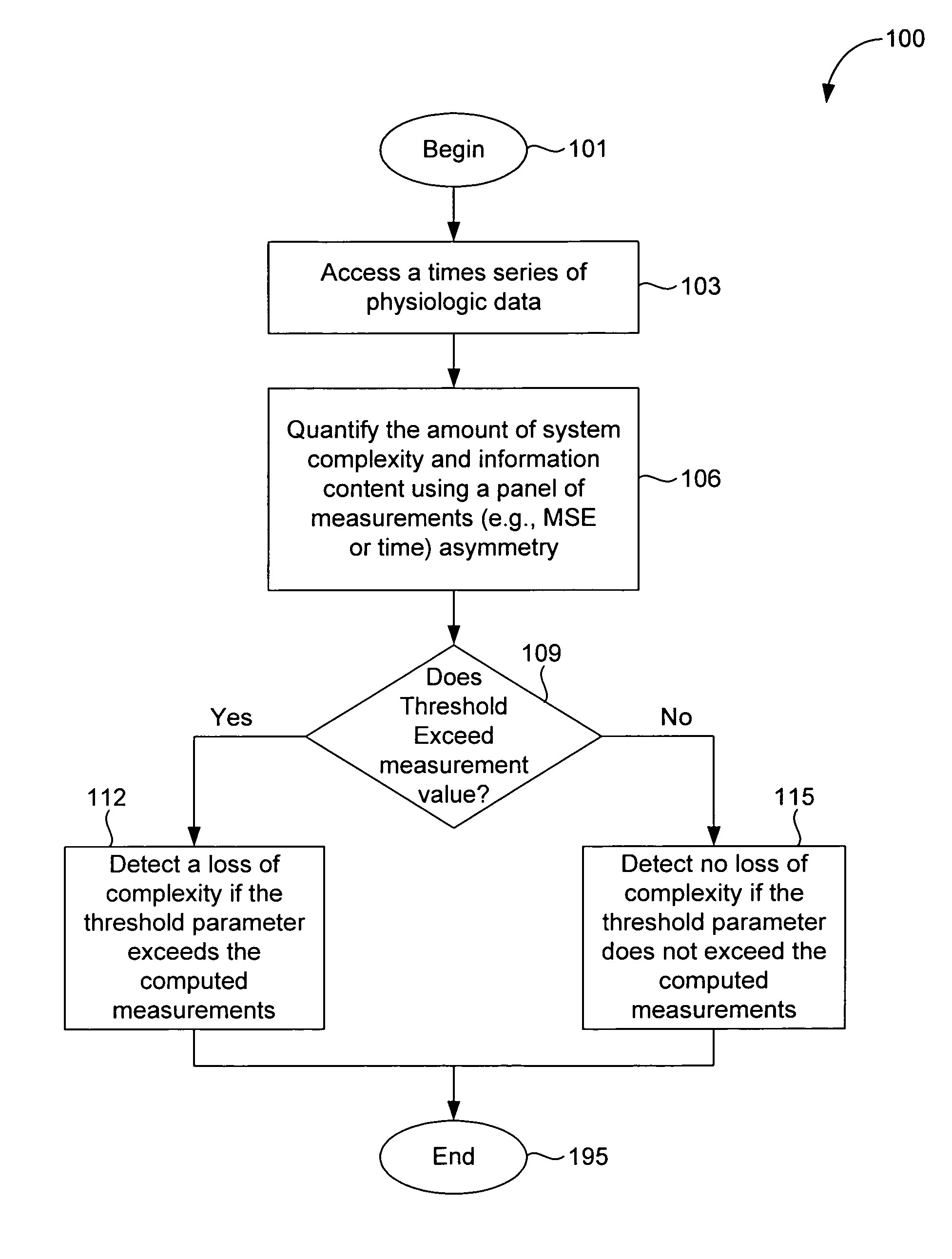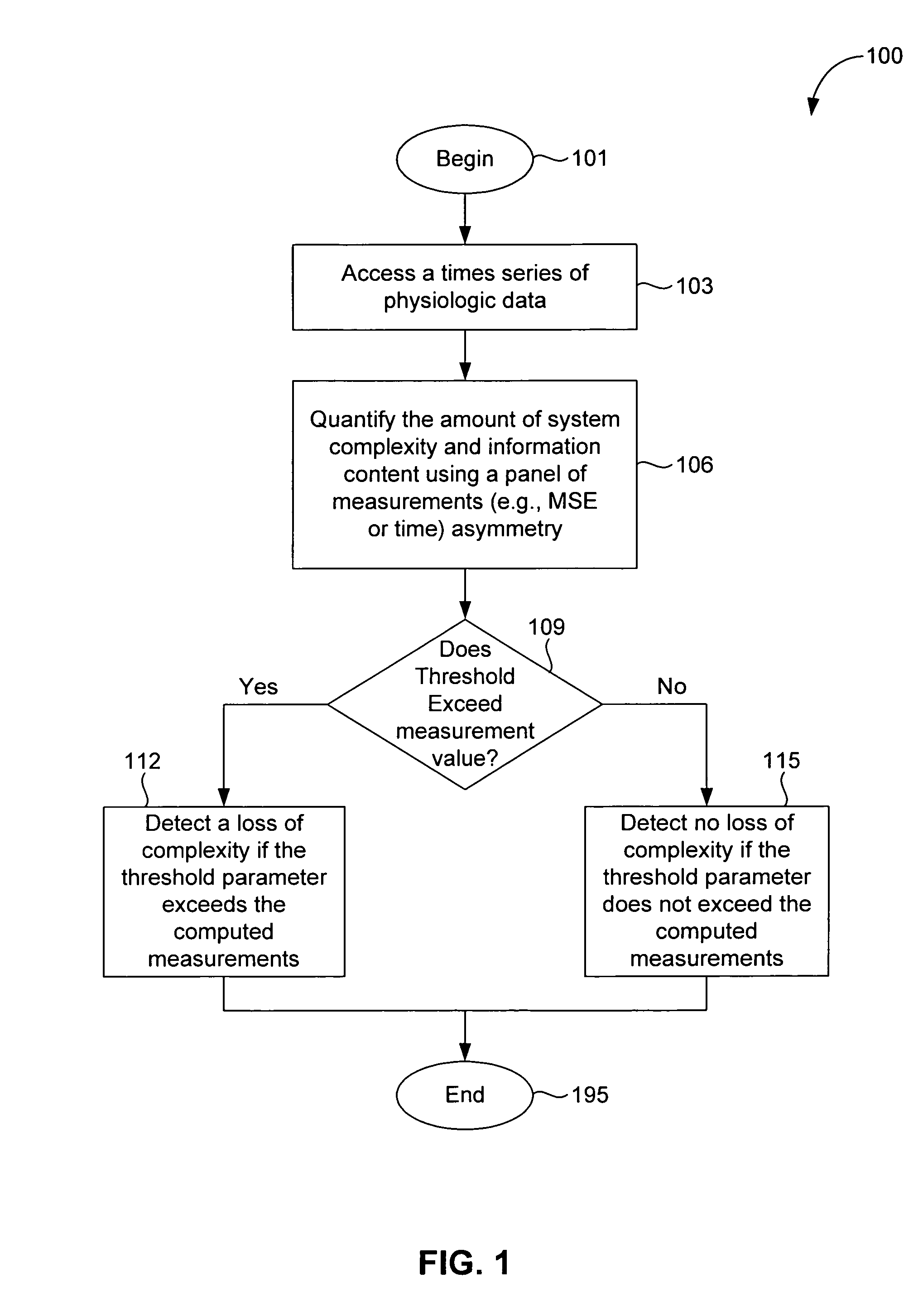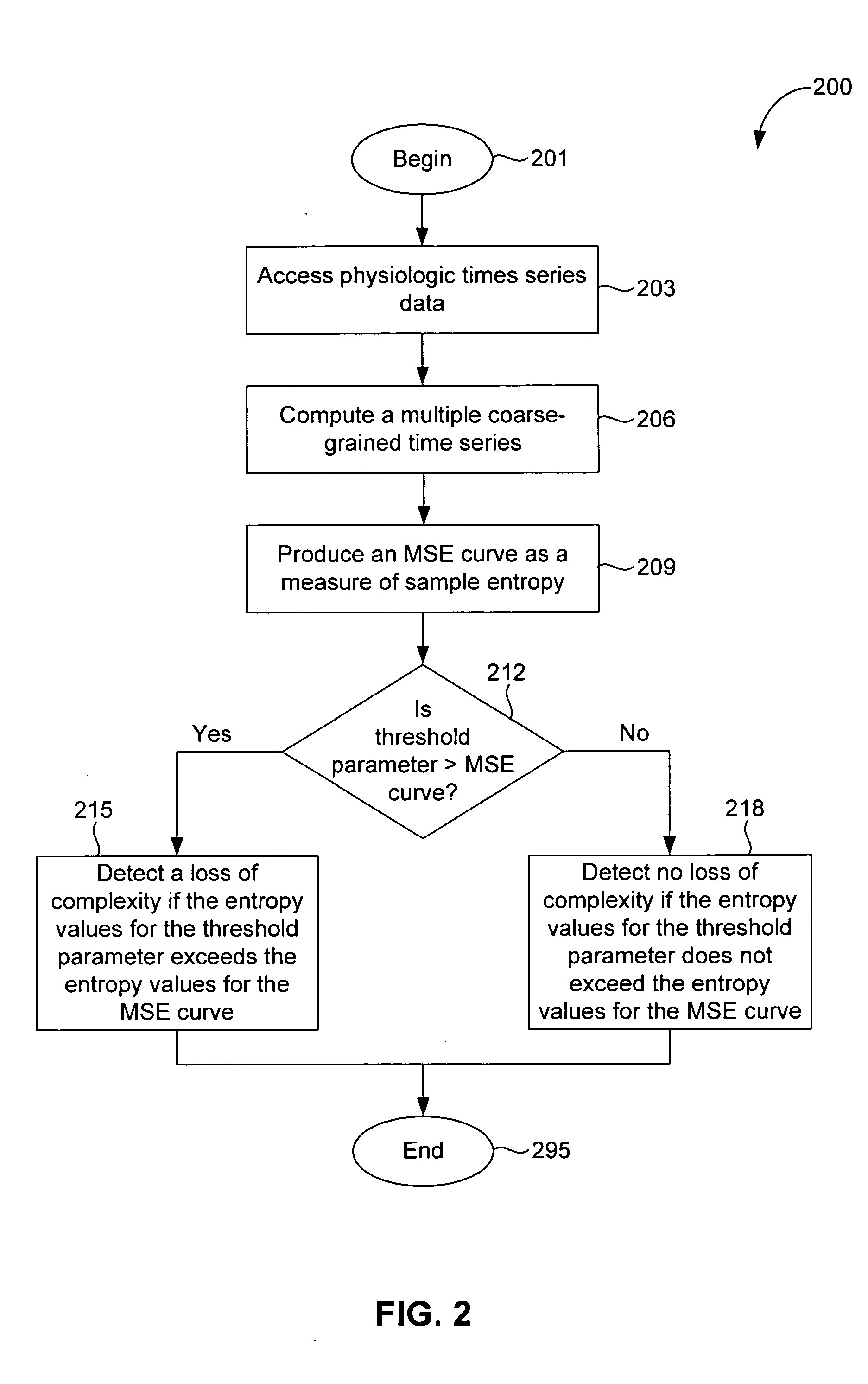Complexity-based dynamical assay for assessing the toxicity and efficacy of pharmaceutical and other therapeutic interventions
a dynamic assay and complexity technology, applied in the field of time series data analysis, can solve problems such as detection of loss of complexity, and achieve the effects of increasing system complexity, quantitative physiologic complexity, and reducing system complexity
- Summary
- Abstract
- Description
- Claims
- Application Information
AI Technical Summary
Benefits of technology
Problems solved by technology
Method used
Image
Examples
Embodiment Construction
[0054] According to embodiments of the present invention, a method, system, and computer program product are provided to perform a quantitative analysis of the degree of physiologic complexity of an organism. Physiologic complexity is associated with the ability of living systems to adjust to an ever-changing environment, which requires integrative multiscale functionality. Under free-running conditions, a sustained decrease in complexity reflects a reduced ability of the system to function in certain dynamical regimes possibly due to decoupling or degradation of control mechanisms. Thus, physiologic complexity is a generic feature of pathologic dynamics. As such, a loss of complexity or information content is a fundamental and consistent marker of adverse effects (including pathology and age-related degenerative changes), and an increase in complexity indicates a potentially therapeutic or healthful effect.
[0055] In an embodiment, a panel of dynamical measurements quantifies diffe...
PUM
 Login to View More
Login to View More Abstract
Description
Claims
Application Information
 Login to View More
Login to View More - R&D
- Intellectual Property
- Life Sciences
- Materials
- Tech Scout
- Unparalleled Data Quality
- Higher Quality Content
- 60% Fewer Hallucinations
Browse by: Latest US Patents, China's latest patents, Technical Efficacy Thesaurus, Application Domain, Technology Topic, Popular Technical Reports.
© 2025 PatSnap. All rights reserved.Legal|Privacy policy|Modern Slavery Act Transparency Statement|Sitemap|About US| Contact US: help@patsnap.com



